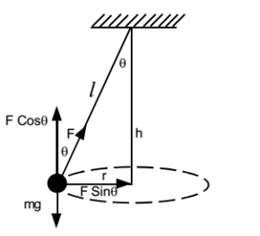Science > Physics > Circular Motion > Conical Pendulum A conical pendulum consists of a bob of mass ‘m’ revolving in a horizontal circle with constant speed ‘v’ at the end of a string of length ‘l’. In this case, the string makes a constant angle with the vertical. The bob of pendulum describes a […]
Conical Pendulum



